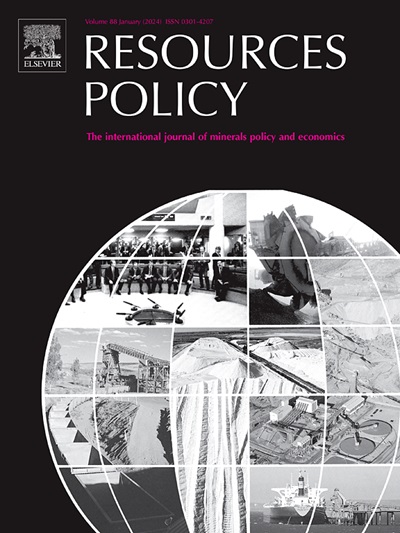An overview of the coal circularity in Brazil: A new sustainable approach based on sampling method, characterization, and waste valorization
IF 10.2
2区 经济学
0 ENVIRONMENTAL STUDIES
引用次数: 0
Abstract
Coal is a key energy source globally, and Brazil holds substantial reserves. However, approximately 50% of the coal extracted in Brazil is discarded as waste, often mixed into a single material without selective characterization. This study aims to establish a framework to help mining companies identify and implement strategies for sustainable coal mining practices in the study region. Residual fraction samples were collected and analyzed for their characteristics and potential applications. The results showed that the clay content in the waste is influenced by the age and depth of the coal deposits, while the beneficiation process determines the pyritic content. Based on these findings, four groups of residual fractions were identified for specific applications. Group 1, with higher carbon content, is suitable for processing and carbon concentration. Group 2, characterized by low pyrite content, coarse granulometry, and neutral pH, may be used to concentrate clay minerals for ceramics and mortars. Group 3, rich in clay minerals, is suitable for fertilizers, techno-soils, pozzolans, and geopolymers. Group 4 includes samples with potential for pyrite concentration. This study highlights the value of systematic waste sampling and evaluation, providing an effective strategy to promote the circular economy. This approach supports sustainable development in the research region and beyond by unlocking the potential of coal mining waste.

求助全文
约1分钟内获得全文
求助全文
来源期刊

Resources Policy
ENVIRONMENTAL STUDIES-
CiteScore
13.40
自引率
23.50%
发文量
602
审稿时长
69 days
期刊介绍:
Resources Policy is an international journal focused on the economics and policy aspects of mineral and fossil fuel extraction, production, and utilization. It targets individuals in academia, government, and industry. The journal seeks original research submissions analyzing public policy, economics, social science, geography, and finance in the fields of mining, non-fuel minerals, energy minerals, fossil fuels, and metals. Mineral economics topics covered include mineral market analysis, price analysis, project evaluation, mining and sustainable development, mineral resource rents, resource curse, mineral wealth and corruption, mineral taxation and regulation, strategic minerals and their supply, and the impact of mineral development on local communities and indigenous populations. The journal specifically excludes papers with agriculture, forestry, or fisheries as their primary focus.
 求助内容:
求助内容: 应助结果提醒方式:
应助结果提醒方式:


